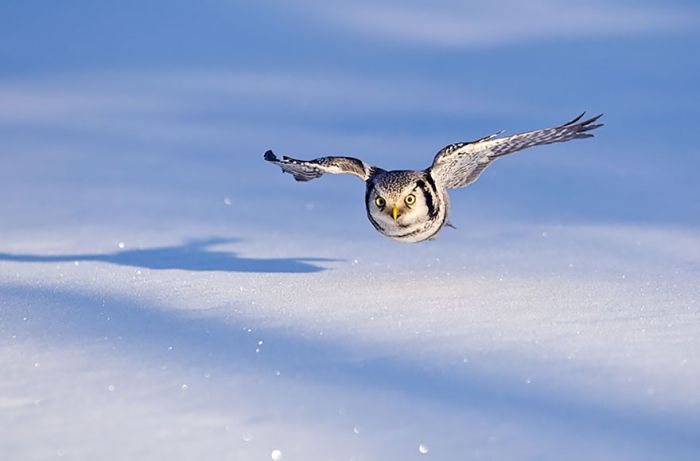|
|
Owl Birds
|
There are some 220 to 225 extant species of owls, subdivided into two families: typical owls (Strigidae) and barn-owls (Tytonidae). Only 1 in 100 owls make it into adulthood. Some entirely extinct families have also been erected based on fossil remains; these differ much from modern owls in being less specialized or specialized in a very different way (such as the terrestrial Sophiornithidae). The Paleocene genera Berruornis and Ogygoptynx show that owls were already present as a distinct lineage some 60 - 57 mya (million years ago), and, hence, possibly also some 5 million years earlier, at the extinction of the non-avian dinosaurs. This makes them one of the oldest known groups of non-Galloanserae landbirds. The supposed "Cretaceous owls" Bradycneme and Heptasteornis are apparently non-avialan maniraptors.
During the Paleogene, the Strigiformes radiated into ecological niches now mostly filled by other groups of birds. The owls as we know them today, on the other hand, evolved their characteristic morphology and adaptations during that time, too. By the early Neogene, the other lineages had been displaced by other bird orders, leaving only barn-owls and typical owls. The latter at that time were usually a fairly generic type of (probably earless) owl similar to today's North American Spotted Owl or the European Tawny Owl; the diversity in size and ecology found in typical owls today developed only subsequently.
Around the Paleogene-Neogene boundary (some 25 mya), barn-owls were the dominant group of owls in southern Europe and adjacent Asia at least; the distribution of fossil and present-day owl lineages indicates that their decline is contemporary with the evolution of the different major lineages of typical owls, which for the most part seems to have taken place in Eurasia. In the Americas, there was rather an expansion of immigrant lineages of ancestral typical owls.
The supposed fossil herons "Ardea" perplexa (Middle Miocene of Sansan, France) and "Ardea" lignitum (Late Pliocene of Germany) were more probably owls; the latter was apparently close to the modern genus Bubo. Judging from this, the Late Miocene remains from France described as "Ardea" aureliensis should also be restudied. The Messelasturidae, some of which were initially believed to be basal Strigiformes, are now generally accepted to be diurnal birds of prey showing some convergent evolution towards owls. The taxa often united under Strigogyps were formerly placed in part with the owls, specifically the Sophiornithidae; they appear to be Ameghinornithidae instead.
|
|









